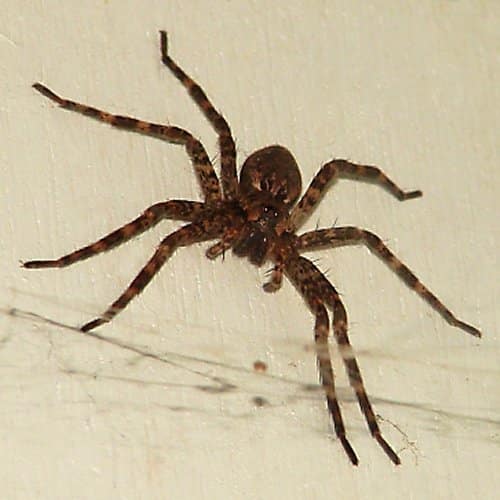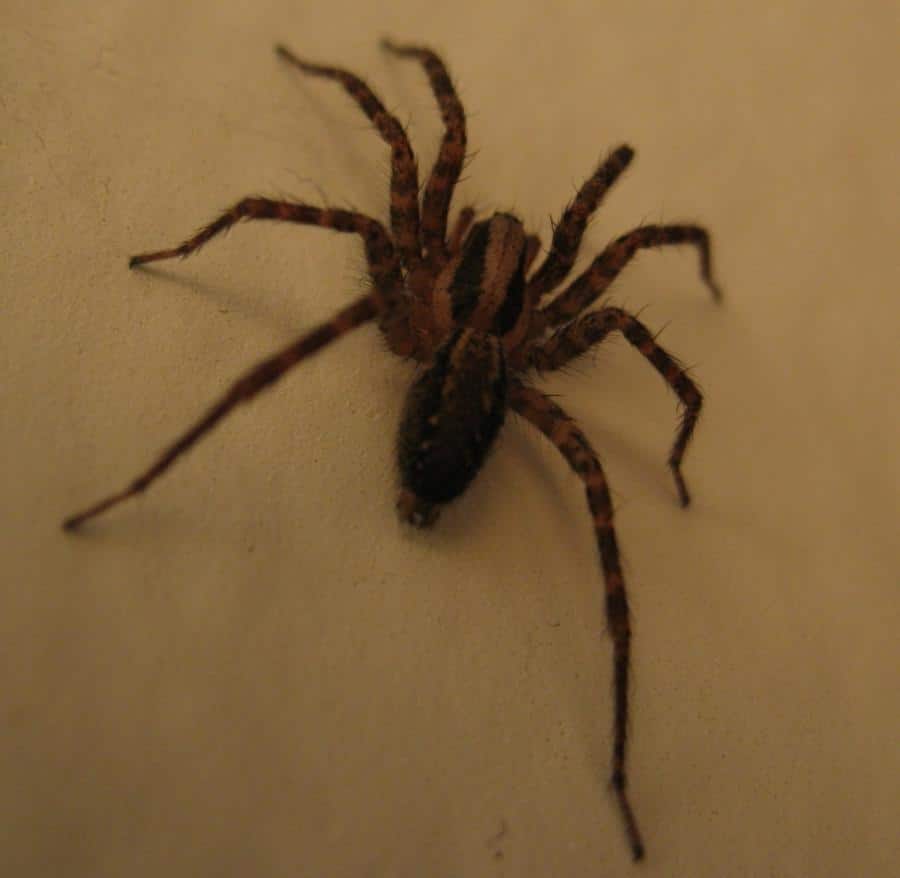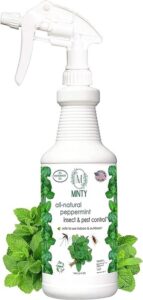Most spiders are harmless, but do you want them inside your house? I presume not. These eight-legged critters with an eerie appearance can easily give you the heebie-jeebies.
From the stealthy crawlers to the ones that seem to have taken up residence in your house, the presence of spiders can turn your cozy space into an unsettling environment. Therefore, while they are crucial in controlling insect populations, keeping them out of your house is best.
Well, how about we delve into ways to get rid of spiders in the house?
Prevention Is Fundamental
You must adopt and observe the prevention strategies to maintain an arachnid-free home.
1. Seal Entry Points
Spiders can slip through tiny gaps, so block their access spots. Look for cracks, crevices, or holes in walls, windows, doors, and foundations, then seal them with silicone caulk or weather stripping.
Repair or replace damaged screens and fill larger gaps or holes in walls or foundations with appropriate materials like cement, mortar, or expanding foam. Also, place fine mesh screens over vents and openings leading into the house, such as attic vents or chimney openings.
2. Declutter and Clean
Spiders love hiding in piles of clutter, so keep your living spaces tidy by cleaning and decluttering regularly. Regularly vacuum your house, focusing on corners, behind furniture, and ceilings. This helps remove webs, eggs, and spiders that might have already found their way indoors.
Store items, including food, in sealed containers and minimize unnecessary items in storage areas. Organize your basement, attic, and storage rooms because they are prime spider spots.
Moreover, sweep away spider webs around windows, doors, and eaves. Also, trim back vegetation and remove debris near the house to discourage spiders from lurking close to entry points.
Since spiders love to nest in cardboard, replace cardboard storage boxes with plastic or metal containers with tight-fitting lids.
3. Lighting Strategies
What kind of lighting do you have in your house? If it is white light, switch to sodium vapor or yellow lights to cut the spider population. Also, keep indoor lights off when you don’t need them, especially at night.
4. Regular Vacuuming
Vacuuming removes the spiders, webs, eggs, and even their prey that have already found their way inside your house. Aim for a consistent vacuuming routine, focusing on areas where spiders commonly lurk, such as corners, ceilings, baseboards, and behind furniture.
Ideally, vacuum these spots at least once a week or more frequently if you notice increased spider activity. Reach into tight spaces, along baseboards, and around window sills where spiders build their webs with crevice tools and brush attachments.
Natural Ways To Get Rid Of Spiders In The House
Several natural remedies can help deter spiders from making themselves inside your house.
1. Use Diatomaceous Earth (DE)
DE is abrasive to exoskeletons. When spiders come into contact with DE, it absorbs the oils and fats from their outer layer, leading to dehydration and ultimately causing them to die. Lightly dust food-grade DE where spiders along baseboards, corners, behind furniture, and near entry points.
2. Essential Oils
Keep spiders at bay with peppermint oil, lavender oil, tea tree oil, citrus oils, or eucalyptus oil. These essential oils create an aromatic barrier that discourages spiders from making themselves comfortable in your home.
Funnel water and the chosen oil into a spray bottle, shake well, then spray it on spider-prone areas. Reapply it periodically, mainly after cleaning or if the scent diminishes.
3. Use Vinegar
Spray vinegar solution (equal parts water and white vinegar) around windowsills, doorways, corners, and other areas where spiders tend to lurk or enter your home. You can also apply vinegar directly onto spider webs or areas where spiders are frequently seen to disrupt their habitats.
4. Cedar
Cedar’s strong scent, which spiders find unappealing, makes it a natural, effective repellent against them. Place cedar blocks, shavings, or sachets in spider hiding and entry areas.
Alternatively, mix some drops of cedar oil with water and spray it where spiders frequent. You can also use cedar mulch in gardens or around your house’s perimeter to deter them from going inside.
Furthermore, consider using cedar storage options like chests or containers instead of regular ones, especially for items you keep in storage areas that attract spiders.
5. Tobacco Spray
Last on our list of natural remedies for spiders is tobacco spray. Spiders find the nicotine content in it unappealing. To prepare the spray,
- Steep chewing tobacco or tobacco leaves in hot water for about an hour, then strain the mixture to create a concentrated tobacco solution.
- Dilute the concentrated tobacco solution with more water to create a spray.
- Transfer the diluted tobacco solution into a spray bottle, then spray it around spider-prone areas.
Chemical Solution To Get Rid Of Spiders In The House Natural
Are you looking for a more potent solution against the spiders inside your house? Consider chemicals. Although highly effective, use them responsibly and per the manufacturer’s guidelines.
1. Insecticides
Look for chemical formulations designed specifically to kill spiders. Here are some common types of insecticides to help you combat spiders:
a) Pyrethroids
These synthetic chemical compounds mimic natural insecticides in chrysanthemum flowers. They’re commonly used in sprays, sprays, and aerosols to kill spiders upon contact. Pyrethroids are fast-acting, so they can help get rid of the spiders inside your house in no time.
Pyrethroids affect the nervous system of spiders, disrupting their normal function and leading to paralysis and eventual death. They are relatively pet and human-friendly if you use them as directed.
b) Residual Sprays
These insecticides are designed to leave a residue after application. These sprays tend to maintain their effectiveness for an extended period, often spanning several weeks or even months after application. Therefore, the spiders will continue dying provided they come across the treated surfaces.
Use residual sprays along baseboards, window frames, doorways, and other spider-hiding or entry areas.
c) Aerosols
You can spray aerosol insecticides directly on spiders or into areas frequented by them. They are available in cans with nozzles for easy application. Aerosol insecticides contain active ingredients designed to kill spiders upon contact; hence, they act quickly by immobilizing or killing them almost instantly.
Upon contact, the insecticide within the aerosol quickly affects the spider’s nervous system, paralyzing or killing it.
Safety Precautions
- Carefully read and always apply the product label instructions.
- Use the appropriate protective gear recommended on the label.
- Keep kids and pets from accessing treated sections until the treatment dries completely.
- Consider using integrated pest management strategies, combining insecticides with preventive measures for long-term spider control.
Best traps for spiders
For a simple yet effective strategy against spiders that does not involve chemical use, consider traps. The options include:
1. Glue Traps
Glue traps consist of a flat board or card coated with a sticky adhesive that traps spiders when they walk over them. Place glue traps on spider-prone areas of your house, with the traps lying flat against the floor or wall and the sticky side facing towards the surface where spiders might travel.
Place multiple traps in different areas where you have observed spider activity for maximum effectiveness. Spiders usually move along walls and edges, so focus on these paths.
Check the traps regularly, ideally every few days, to see if they’ve caught any spiders. Dispose of and replace the traps when they’re full or if they lose their stickiness.
Note
Consider enticing the spiders by adding a small piece of food or a drop of honey in the trap’s center.
Homemade Spider Traps
Are you up for your simple DIY project? Below are the steps to make spider traps.
a) Jar Trap
Materials
- A tall glass jar or a plastic cup
- Bait (bread, small pieces of fruit, or other food)
- Tape (optional)
Steps
- Take the jar or cup and place a small piece of bait at the bottom. Spiders are attracted to food, so this will lure them in.
- Position the jar against a wall or where spiders frequent, making sure it’s sturdy and won’t tip over.
- If necessary, roughen the sides with tape or glue to create a surface the spider can climb on but won’t allow them to escape.
- Check the trap regularly. Once a spider climbs in, you can either release it outside or dispose of it properly.
b) DIY Cardboard Tube Spider Trap
Materials
- Scissors or a knife
- Bait
- Empty paper towels or toilet paper tubes
Steps
- Cut the cardboard tube into several smaller sections, each about 2-3 inches long.
- Flatten each tube section slightly and make a series of cuts from one end towards the center, creating strips like a pinwheel but leaving a small uncut portion in the center intact.
- Fold the strips inward to create a small funnel, leaving an opening at the top.
- Place a small piece of bait at each funnel’s bottom.
- Position these traps in areas where spiders are commonly found.
- Check the traps periodically and release or dispose of captured spiders as needed.
Summary
With the strategies above, you can bid spiders goodbye. Consider combining multiple eradication methods to manage and eliminate spiders effectively. Remember, consistency in maintenance and cleanliness is crucial in preventing spider infestations.

I’m Mike Hyle, an exterminator with 7+ years of experience handling all sorts of pests, including mice, cockroaches, bed bugs, and termites. I also write for Pest Solutions DIY blog to share my knowledge and help homeowners keep their homes pest-free. Outside work, I enjoy hunting, snowshoeing, and exploring nature. Check out my blog for helpful pest control tips!




